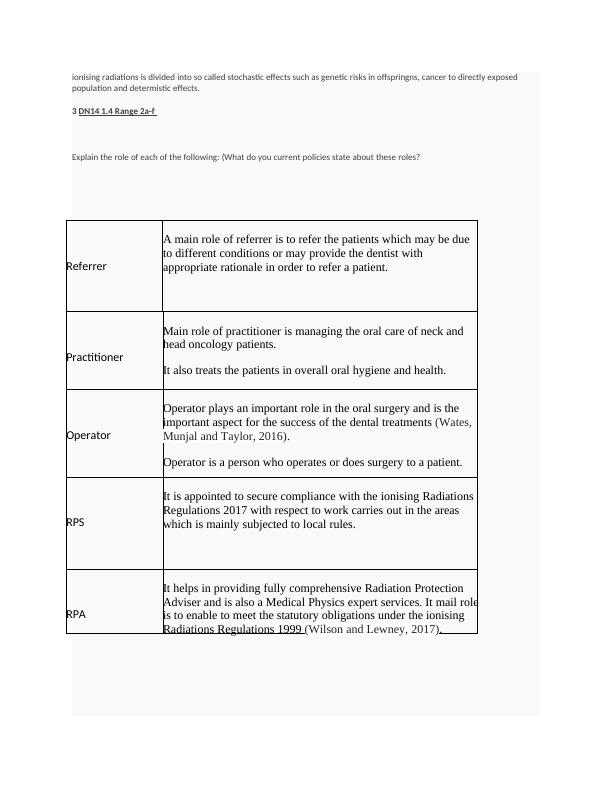Ionising Radiation Regulations 1999 (Doc)
Added on 2021-01-11
10 Pages1981 Words42 Views
DN 14Part 11.DN14 1.1 range 1abc Explain the following principles of the IRMER regulations.Ionising Radiation Regulations 1999.The main aim of ionising Radiation Regulation of 1999 which is defined by the official code of practices is to establish a framework in order to ensure that ionising radiations which arise from work activities whether natural or man made radiations are kept reasonably low and should not exceed the limits which are specified for individuals. Ionising Radiation (Medical Exposures) Regulations 2000.The main purpose of this law is to protect the individuals from the dangers of ionising radiations who is going under medical exposures (Brown and Davies, 2017). It includes the diagnostic procedures like X-rays, nuclear medicines, CT scans. It also includes protecting the individuals from the radiations from the treatments like radiotherapy irrespective where they are taken in dental practice, hospital, chiropractic etc.ALARA /ALARP – what does this stand for?ALARA stands for “As Low AS Reasonably Achievable”, which means to make a reasonable efforts in order to maintain exposures to ionising radiations at lower limits so that it does not exceed limits.2.DN14 1.2,1.3 1.5 Range 3aIonising radiation is hazardous. Research the procedures in place at your surgery for the following:Safe use of X-ray equipment.X-ray machine produce emit huge amount of radiations which may be harmful for the individuals so, there should be safety maintained where the X-ray machines are established. Various X-ray producing equipment and their locations should be registered with safety and radiological and health council. X-ray machines should be only used by under the supervision of a person which has got appropriate license. Hazards associated with ionizing radiation.There are various risks associated with the ionising radiations, with discovery of X-rays skin burns had been reported and after a time period of seven years a first case of cancer was observed due to radiations. Generally the risks associated with the

ionising radiations is divided into so called stochastic effects such as genetic risks in offspringns, cancer to directly exposed population and determistic effects.3 DN14 1.4 Range 2a-f Explain the role of each of the following: (What do you current policies state about these roles?ReferrerA main role of referrer is to refer the patients which may be due to different conditions or may provide the dentist with appropriate rationale in order to refer a patient. PractitionerMain role of practitioner is managing the oral care of neck and head oncology patients. It also treats the patients in overall oral hygiene and health. OperatorOperator plays an important role in the oral surgery and is the important aspect for the success of the dental treatments (Wates, Munjal and Taylor, 2016). Operator is a person who operates or does surgery to a patient. RPSIt is appointed to secure compliance with the ionising Radiations Regulations 2017 with respect to work carries out in the areas which is mainly subjected to local rules. RPAIt helps in providing fully comprehensive Radiation Protection Adviser and is also a Medical Physics expert services. It mail roleis to enable to meet the statutory obligations under the ionising Radiations Regulations 1999 (Wilson and Lewney, 2017).

Part 21.DN14 2.1, 2.2 range 1 & 2 Complete the radiograph table:RadiographIntra-oral orExtra-oralWhat area is seenPurpose of taking theradiographBitewingintra-oralJaw BonesIt is used to examineinterdental caries andrecurrent caries underexisting restoration.

End of preview
Want to access all the pages? Upload your documents or become a member.
Related Documents
Dental Radiography Principles And Techniqueslg...
|8
|1103
|483
Analysis of Medical Situation Assignmentlg...
|8
|1727
|354
